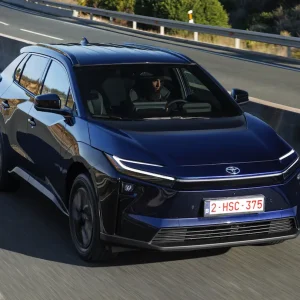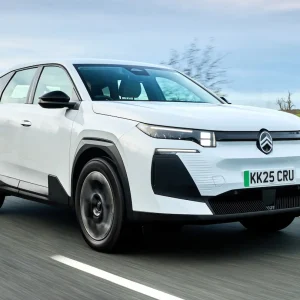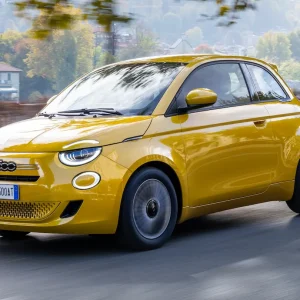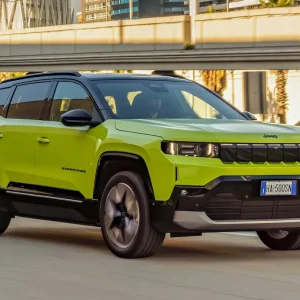Audi went on a splurge of plug-in hybrid launches in 2020, inserting its TFSI e powertrain into four models. That includes the car tested here, the Q7 large SUV – a model that was previously facelifted in 2019.
Given the model’s size, it’s perhaps unsurprising that Audi didn’t skimp on the PHEV version’s power. Instead, the Q7 TFSI e gets a 340hp petrol engine, paired with a 136hp electric motor, with a combined system output of 381hp (an even more powerful version is available with the sporty Competition version). A 17.9kWh battery allows an electric driving range of up to 29.8 miles on the WLTP cycle, depending on the spec.
If driven in a relaxed manner, the Q7 can indeed be driven on electric power alone, including up to motorway speeds, but acceleration in this mode is far from sprightly. With the engine involved, however, the powertrain can deliver highly impressive straight-line performance – though you can anticipate soaring fuel bills if this is done regularly. Despite the power, you wouldn’t expect the Q7 to drive like a sports car, and it doesn’t – the chassis never does anything untoward, with the all-wheel drive system and impressive brakes well up to keeping things under control. But you’re always aware of the weight (increased by nearly 200kg with the PHEV compared with a diesel Q7), though the adaptive suspension does a good job of limiting roll in corners.
Ride comfort is very good, as is visibility, meaning that despite the Q7’s size, it’s not intimidating to place on the road. Refinement is also impressive, with cabin noise levels kept to a minimum even when the engine is being called upon.
That refinement only adds to a general air of luxury – the standard of interior trim is excellent and the cabin is extremely spacious. However, a downside of the TFSI e is that it’s only a five-seater, with the third row of seats you get with the regular Q7 sacrificed to accommodate the battery, though you do still get a generous 650-litre boot.
As befits an electrified model, the level of interior technology is also very high. The central double screen arrangement, with a traditional infotainment touchscreen above a second one handling vehicle functions, is a technological tour de force, and since it first debuted on Audis a few years ago the haptic feedback it offers has been improved, so it now does a far better job replicating the feeling of pressing physical buttons, overcoming some of the need to look away from the road when driving to make sure the system has picked up your inputs.
It all sounds jolly promising for the Q7 – but there’s a major flaw, and it comes in the form of Audi’s German arch-rivals. The plug-in hybrid versions of the BMW X5 and Mercedes-Benz GLE – the latter utilising a diesel engine – both have bigger batteries than the TFSI e. This means that as well as having far more impressive official fuel economy figures (though these are heavily driver-dependent for PHEVs in the real world), they also incur just 7% BIK tax, versus 16% for the Q7 (rates from April 2021). That in turn means a 40% taxpayer could save more than £200 per month by opting for the BMW or Merc, which, even for the well-paid drivers who might be considering these vehicles, is a difference that will be tough to ignore. And even if they can, employers might not fancy a yearly National Insurance increase of more than £800 with the Audi.
Audi Q7 55 TFSI e quattro 381PS S line tiptronic
P11D: £68,330
Residual value: 46%
Depreciation: £36,920
Fuel: £3,079
Service, maintenance and repair: £3,800
Cost per mile: 72.99p
Fuel consumption: 104.6mpg
CO2 (BIK band): 60g/km (16%)
BIK 20/40% a month: £182/£364
Boot space: 650 litres
Engine size/power: 2,995cc/340hp plus 136hp electric motor





